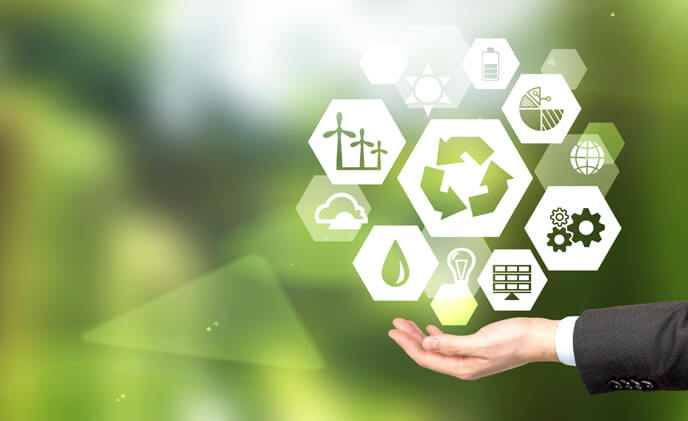In today’s digital era, Smart Technologies have changed surreptitiously from predefined parameters requiring minimum interference to something that also enables green IT and environment protection. Most of these smart technologies are driven by Internet of Things that help us interact with devices like digital sensors, home appliances and wearable smart devices. According to several analysts, while we still need to develop technology responsibly, a time will come when technology and environmental sustainability will go hand in hand with a need to develop interdependently.
When the concept of IoT was coined, it came with the idea of billions of devices that were needed to sense and collate data to enable smart decision. These devices needed energy of their own and it were expected to impact the environment as well. However, further analysis made it clear that the benefits derived from these IoT devices will actually help promote a greener world. It is said that even the amalgamation of these billions of devices will only add a few power stations on the face of this earth; many will also be built on a self-powered formula with solar, hydro or other energy generation methods.
Let us have a peek at some of these smart technologies that can actually further reduce negative environmental impact and the corresponding carbon footprints:
1. Smart Structures: A smart structure is the one that helps its occupants and stakeholders interact with the building via a smart power grid wherein they can automatically control the environment and features of the structure like ventilation, heating, lighting security, etc. So in case the building is sparsely populated in the afternoons on weekdays, heating, lighting and water supply can be automatically reduced. Similarly, in case of energy or resource wastage like water leaks, the devices can instantly update the maintenance crews. These smart automated decisions make such smart buildings around the world a boon for environmental conservation.
2. Smart Farming: Agricultural industry around the world has faced the repercussions of environmental degradation like no other. While agri-tech is trying to do its job, inclusion of IoT in farming is changing the very nature of fields. Sensors are not only helping farmers to reduce waste but to also plan their farming activities better for utmost output from the least amount of resources. So for example, when the weather is about to turn too dry that the crops’ yield could be damaged, sprinklers start automatically or with approval of the farmer. Similarly, when the moisture level in the soil is optimum the amount of water used to hydrate the crops is reduced saving both power and water.
3. Smart Sensors: Sophisticated sensors which can be mounted or can be carried around can eventually help in reducing pollution levels. These sensors measure the air quality and alert their users through apps about areas that they should avoid. But besides this, they also raise awareness about high emissions and zones that need rapt attention by authorities as well as the public in general. Motor traffic in these areas can be reduced on days when the emissions are too high and more measures can be ensued.
4. Smart Factories: Responsive, adaptive and connected manufacturing process is a flat-out answer to those smoke-emitting and waste-producing factories of the past. The supply chain has digitally transformed off late shifting from linear operations to an interconnected system buoyed by constant stream of data. This type of integration can not only raise productivity and reduce defective products, but it can also help utilize resources in the best possible manner.
5. Smart Data Processing: While devices are only one component of the ‘things’, the sheer volumes of data produced, transmitted, stored and processed is another energy-consuming ballgame. However, with advent of cloud technology, this can also be kept in check. Moreover, tech giants who have such energy-efficient data centers are taking massive steps to reduce their carbon footprints. They are all trying to improve their green credentials by investing highly into renewables.
Thus, it is now possible to determine whether the highly connected lives via IoT are really green or not. The Global e-Sustainability Initiative (GeSI), an international consortium of tech companies and telcos, in 2015, released its #SMARTer2030 report, which suggests that ICT, including the IoT, will be able to save almost 10 times the carbon dioxide emissions that it generates by 2030 through reduced travel, smart buildings and greater efficiencies in manufacturing and agriculture.

